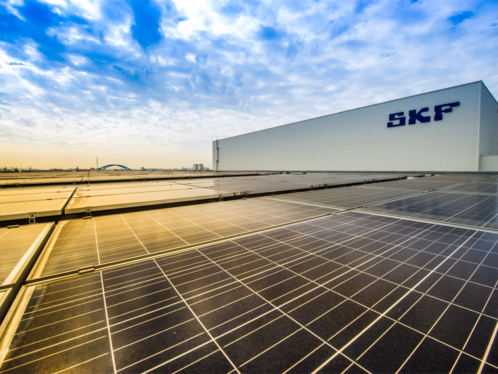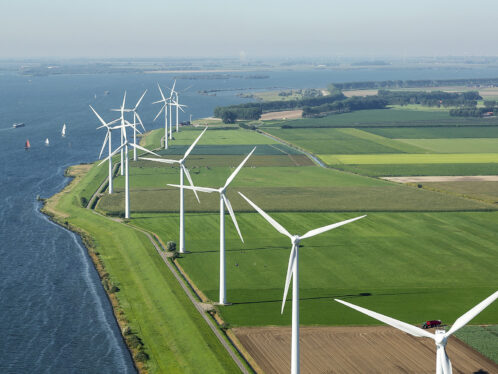
How SKF is working to reach net-zero emissions
The fight against global warming is high on the agenda of many big companies, including SKF. The company is intensifying its efforts by expanding its goal of net-zero emissions from its own operations in 2030 to cover the whole supply chain, from raw material to finished products, by 2050.
Lannering is referring to the growing strategic implications of the global climate crisis. Providing sustainable solutions and reducing greenhouse gases is not something we will only do for a couple of years. We are at the stage where markets are changing forever – and the sooner companies adapt, the better position they will have.
“I think that no company is better positioned than SKF to be a part of this journey and to capture the opportunities that lie ahead,” says Lannering. “We have incredibly talented people throughout the company who will make this happen. We will work with our customers, but we will also lead the way by working on our own operations and supply chain.”
The climate science is clear, and we know what needs to happen. Under the Paris Agreement the world must reach net-zero emissions by 2050. Yet there is still a huge gap between what science tells us and the actions that we are taking: 2023 is on its way to becoming the year with the highest levels of CO2 emissions in human history.
According to research from the University of New South Wales in Sydney, Australia, the largest emitter overall is the industrial sector. In 2018 it released 20.1 gigatonnes of CO2 into the atmosphere, some 35 percent of the total global emissions. For industrial companies, the urgent need for decarbonization presents massive challenges and opportunities – in their own operations, in their supply chains and with their customers.
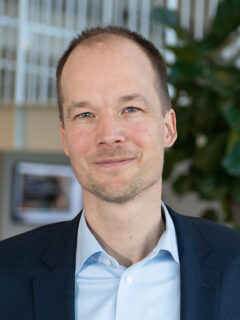
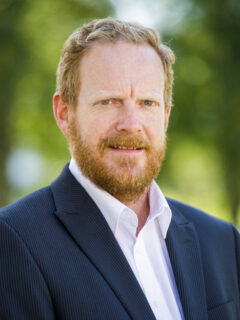
Pioneering businesses join initiative to limit temperature rise
Many companies are gradually transforming the way they do business and are setting tough targets that are aligned with climate science. More than 1,000 pioneering businesses, including SKF in 2021, have joined the Science Based Targets initiative (SBTi), which helps companies establish emission targets that are sufficiently aligned with the goals of the Paris Agreement. The Paris target is to limit the world’s temperature rise to 1.5°C above pre-industrial levels. This requires halving greenhouse gas emissions by 2030 and achieving net-zero emissions by 2050.
However, earlier this year, the Power Forward 4.0 report of the Worldwide Fund for Nature determined that only 20 percent of Fortune 500 companies have science-based targets, although 60 percent of them have set a climate- or energy-related commitment.
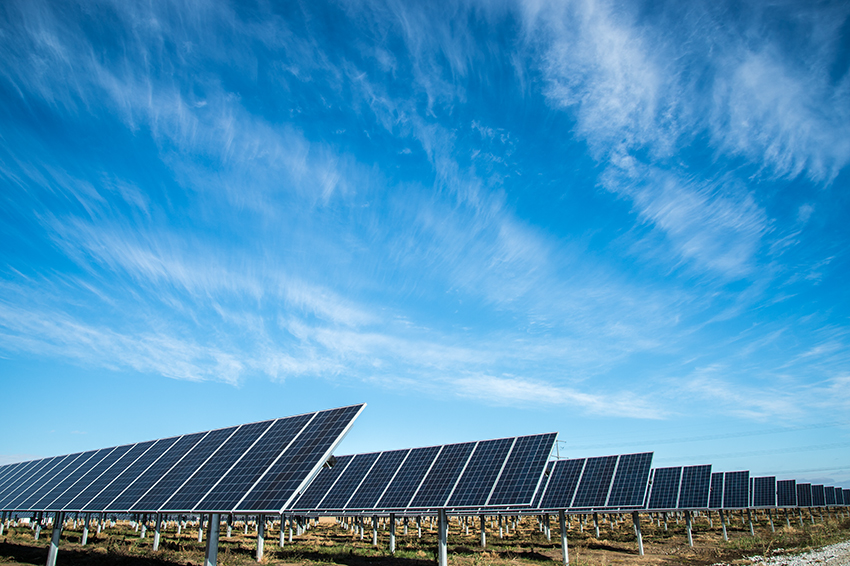
Industries are depending on others
SKF believes it can make its own significant contribution to helping the world become carbon free. It wants to achieve this by driving innovation and growth for itself and its customers.
“Reaching this goal will require major focus and commitment from people within our own operations and from those working at our suppliers in the full value chain,” says Rickard Gustafson, CEO of SKF.
“We call for change and innovation at a scale and a speed never seen before,” he says. “But we cannot accomplish it by ourselves. We will work with all stakeholders to advocate for this action. For our part, we are approaching the task as we always do – with determination, competence and confidence. Because we are engineers. Problem-solving is what we do. In short, decarbonization is in progress at SKF.”
But there are many influences and dependencies if we are to achieve these goals. Industries depend on suppliers that may become customers at the other end of the chain. For SKF to achieve a net-zero-emissions value chain from “cradle to gate” means working with raw material suppliers, especially steel, as well as the logistics supply at the other end.

We call for change and innovation at a scale and a speed never seen before. But we cannot accomplish it by ourselves.
Rickard Gustafson
CEO, SKF
SKF launches emission-reducing agenda
SKF has set out a clear agenda for making its own contribution to the tackling of climate change The company is implementing an ambitious programme for its entire value chain – from raw material to finished product delivered to the customer – to have net-zero greenhouse gas emissions by 2050 or earlier.
Rob Jenkinson, operational and group EHS & sustainability manager, has been part of the cross-functional team that has developed the company’s carbon-free strategy highlights. These give SKF a good foundation to build on.
“SKF has considered the impact of CO2 in its own organization since 2001,” he says. “And since 2007 SKF has grown its revenue by 60 percent while reducing carbon emissions from production by 40 percent.”
However, whatever efforts SKF makes, its efforts are a part of a global picture. Businesses alone cannot achieve what the world needs. Governments must play their part in setting bold and coordinated policies, and it will take positive and binding outcomes from the COP 26 UN Climate Change Conference and other initiatives to make the push for lasting action. That means putting an economic cost on carbon emissions all over the world that reflects the real environmental and social costs, so that industry and businesses are motivated to act to reduce and eventually eliminate them.
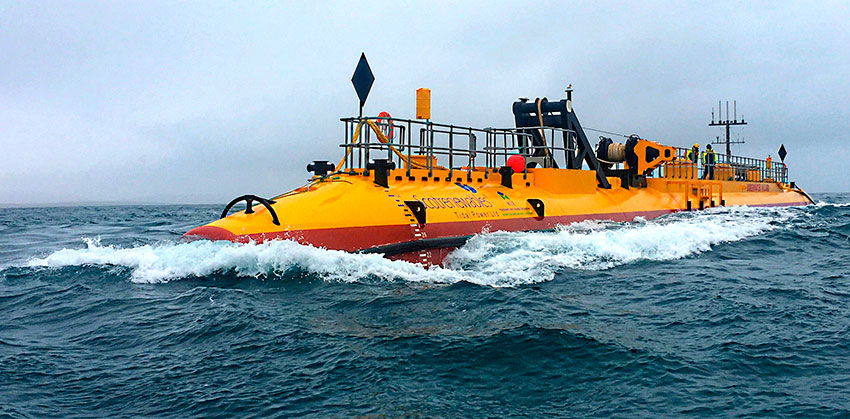
SKF enables customer goals
“One of the main ways we can be a key enabler to transition from a carbon-based economy to a carbon-free economy is through our customers,” says Jenkinson. “SKF has products, systems and services that can enable the growth of clean technologies, both existing and emerging ones.”
Indeed, SKF has already provided technology and innovation for clean technologies such as wind turbines and electric vehicles and is pioneering work with the emerging tidal-power industry.
For all its customers, SKF can support reduction of carbon emissions by optimizing its own products and customer systems – for example through products of reduced weight and lower friction and by helping customers design more energy- and carbon-efficient systems.
Jenkinson points out, “We can enable significant energy and carbon savings for our customers in all industries by optimizing the design of our products and their products.” This is achieved through, for example, making SKF products more efficient, lighter and longer lasting and by supporting customers with advanced modelling and simulation to improve system designs. The use of Rotating Equipment Performance contracts can also minimize energy and carbon waste and optimize customers’ process performance.
“With a combination of these approaches, we have the potential to make a profound contribution to the transformation to a carbon-free world and at the same time drive innovation and growth for SKF and our customers,” Jenkinson says.
“But our moral and business obligations do not stop with our ability to enable our customers’ transformation,” he continues. “We must also address the carbon emissions of our own operations and activities and those in our extended supply chain. By addressing them, we set a positive example for our customers, suppliers and other stakeholders and create a long-term competitive advantage by reducing costs and risks. We are also seeing increasing expectations from customers for SKF to source products that have a lower impact to produce.
“Many of our customers are now going beyond looking at the impact of their products and processes in the use phase – when the machines are running – and seeking to understand and reduce the impacts that occur upstream when the machines are being made,” he says.
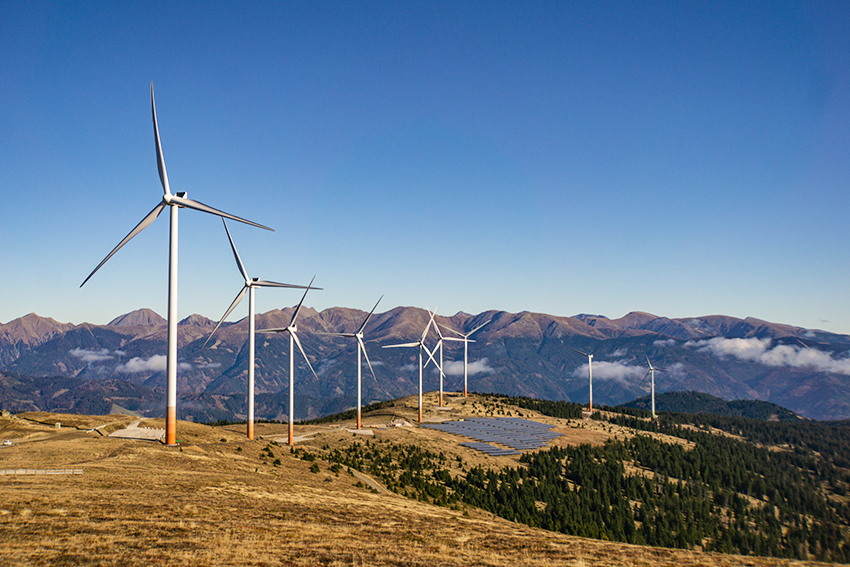
Supply chain as important as internal operations
SKF has set out its target to have net-zero greenhouse gas emissions in its supply chain and operations by 2050. This means net-zero emissions throughout the SKF value chain, from raw material to finished product delivered to the customer, by 2050, if not before. SKF’s own operations will have net-zero greenhouse gas emissions in operations much earlier, by 2030. SKF targets will be aligned with the most ambitious Paris Agreement aims to limit global warming to 1.5°C.
SKF has set a credible and transparent, yet bold, path to reach net-zero emissions by 2050. The work is broken down into five-year interim targets for each category. This allows the company to adapt the targets as new technology and governmental action evolve.
Steel production is responsible for 7 percent of the world’s carbon emissions. CEO Rickard Gustafson notes, “Steel is by far the biggest source of carbon emissions upstream in SKF’s supply chain. The transition from the current global steel production infrastructure to one that is carbon neutral is a massive undertaking. We are already working with our steel suppliers on this, but there are limitations on how much change we can drive unilaterally. We will be working together with other like-minded industrial users of steel to advocate for the structural changes needed, and we will do this through our active membership in the SteelZero and ResponsibleSteel initiatives.”
Important priorities set
SKF is targeting its efforts on several fronts within its own global organization and with its suppliers. For its own operations its 2030 goal to be carbon neutral will be achieved by aggressively driving improved energy and material efficiency and by making the switch to 100 percent renewable energy. A key challenge is to remove the use of gas from industrial heating processes and building heating through a switch to biomass or electrification.
“We are confident we can meet that challenge,” says Jenkinson. “Two of our factories already have made this switch and more will follow. two more are in the process of doing so.”
Now that priorities have been set to deliver the greatest impact on reducing its global emissions, SKF is focusing on those activities that generate 10,000 tonnes of carbon or more. This covers direct materials, SKF’s own operations, transport to customers and from suppliers, IT activities, indirect material and employee and business travel.
“The next biggest emitter of greenhouse gas is transport,” says Jenkinson. To this end, SKF is avoiding the use of air freight as much as possible and aims to specify the most efficient method of transport. Again, SKF believes that a collaborative approach will be needed to encourage the transport industry to make profound changes.
At the time of SKF’s 100-year celebration in 2007, the company was strongly aware that its technology could and did make a real contribution to saving energy for the world. One of its senior research directors of the time, Fred Lucas, pointed out, “We need to change our behaviour so that future generations can benefit.” Those words ring as true today as they did then and with a greater urgency than ever before.
Rob Jenkinson says, “Net zero by 2050 sounds a long way away, but for the world to reach it will be a huge challenge requiring trillions of dollars of investment.” Halting climate change is as big an undertaking as the world has ever faced, but SKF believes that industry has a responsibility to go above and beyond its responsibilities for cutting carbon emissions.
SKF’s net-zero greenhouse gas emissions goal aligns with SBTi
SKF has joined the Science Based Targets initiative (SBTi), which helps companies to establish emission targets that are sufficient to align with the extensive goals set by the Paris Agreement. The company’s goal is to have net-zero greenhouse gas emissions in its own operations by 2030 and expand this to net-zero greenhouse gas emissions in the full supply chain by 2050.
The organization’s targets have been set by the same people who will be responsible for achieving them. All targets will be aligned with the SBTi and will cover all relevant greenhouse gases – not only carbon dioxide. Consequently, SKF’s climate targets will use the same definitions as those stipulated by the SBTi.
SKF estimates that the emissions generated within its operations and in the upstream supply chain and related activities amount to approximately 1.8 million tonnes of CO2e (carbon dioxide equivalent). The biggest source relates to the sourcing of direct material, primarily steel and components of steel, followed by emissions from the company’s operations and logistics.


